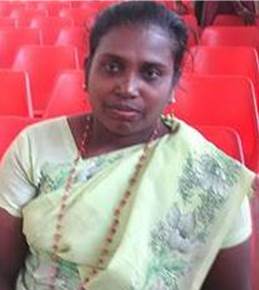Huma Dar
 material to be analyzed (1): upper-caste/class feminists have claimed that only the victims/survivors of sexual assault at an upper-caste “workplace” — the uc middle- to upper-class being implicit here — have the right to “feel confident that they themselves will have the right to control the pace of the follow-up, and also to decide how far to take it.” unlike those (in the vast majority) who suffer from “caste violence, communal violence, or [are] in “other” conflict zones”!!!
material to be analyzed (1): upper-caste/class feminists have claimed that only the victims/survivors of sexual assault at an upper-caste “workplace” — the uc middle- to upper-class being implicit here — have the right to “feel confident that they themselves will have the right to control the pace of the follow-up, and also to decide how far to take it.” unlike those (in the vast majority) who suffer from “caste violence, communal violence, or [are] in “other” conflict zones”!!!
test case pertinent to caste and class: if the domestic helper of an upper-caste/class feminist has been sexually assaulted by a neighbour or their own brother or father, will they also really advise the assaulted person to sit on it for as long as they want as a rational way to assert their “right to control the pace of the follow-up, and also to decide how far to take it”?! why, or why not?
=> lesson #1 in uc feminism: different rules apply to you depending upon your caste, class, religion, and membership in an occupied people struggling for freedom — the latter btw they’ll never spell out ‘cuz it would entail speaking out against all occupations. “conflict zones” is so much safer. so benign. it has a feel good je ne sais quoi “progressive” tone, while assiduously avoiding the political. moreover, it will make those in INCACBI, who don’t vocally support Azadi, feel cognitive dissonance when they can so charmingly pretend ignorance of Kashmir or Assam or Manipur etc. at best, or point to the Islamist bogey at worst.
material to be analyzed (2): the managing editor of Tehelka was bound by law to report to the police the prima facie crime — not “an untoward incident,” but something, as she herself conceded in an interview to ndtv, which fits the new legal definition of rape, thus taking her immediately out of the sisterhood-of-agential-victimhood.
=> lemma #1 of uc feminism: there is no explanation given why contradictory “feminist” ethics should’ve applied to ms. s. chaudhury — she of the “adamantine feminist-principle(s)” claim and acclaim. why was her deployment of the argument of agential victimhood hypocritical, if that argument is indeed logically consistent and irrefutable for everyone else? does it in fact make “feminist sense” for the employer or manager, to whom a horrible crime is reported, to be required by law to report the same to the police? if so, that “feminist sense” should not be in contradiction with the other uc feminist principle of victim’s agency. how can one ensure that one’s alleged feminist stance, is least amenable to being used as an alibi of duress by the perpetrator to recant his earlier confession, although perhaps such a possibility cannot be fully ruled out in the hands of venal lecherous perpetrators? (it seems to be chaudhury’s self-serving citation of “feminist principles” which is allowing tejpal to put forth that horrid excuse…)
=> lesson #2 in uc feminism: ethics are slippery, and will shift and move according to the caste, class, religion, “progressive” credentials, membership in Indian military, etc. of the alleged perpetrator versus that of the victim/survivor. upper-caste upper-class powerful perpetrators might be amenable to genteel bourgeois farcical apologies; lower-caste/class, slum-dwellers, migrant perpetrators, not protected by AFSPA, must be taken to court and bear the full brunt of the law. and then some. sometimes just to satisfy the Indian “nation’s conscience.”
material to be analyzed (3): the police is bound to file an FIR for this cognizable offence. in fact, anyone who’d witnessed the crime or knew of the crime can report to the police. yet the dubious sisterhood of caste and class privileges can mislead a woman victim/survivor with the spiel about being able “to control the pace of the follow-up, and … how far to take it”!!!
fact #1: it can take one who is assaulted/tortured sexually a while to regain one’s self-confidence and a sense of control over one’s life and body. period. and even then there will remain triggers for the rest of one’s life. period. (related philosophical question: is any human being ever in control of her/his life?). [it behooves all human beings, leave alone feminists of whatever stripe, to remain empathetic and listening to, and in due solidarity with, the person, at each moment, if they believe in her/his account, until and unless the complainant is proven to be lying. otherwise, the condemnations generously and flippantly thrown in the direction of the alleged perpetrator remain meaningless.]

Kashmiri women mourn the killing of their sons and fathers, husbands and brothers by the occupying Indian army…
fact #2: there is no empirical data so far showing that long-term healing will be faster if the case is not pursued legally and competently, especially where the chances of success are immense given the perpetrator’s own voluntary confession (and that too not under duress, nor under police torture as shaheed afzal guru’s).
fact #3: sexually assaulted Kashmiri and Dalit women walk miles at end to report rape at police stations, which more often than not refuse to file an FIR for them. in 1991, the women of Kunan Poshpora in Kashmir had to wait 26 days before the investigation allowed them to be medically examined.

Women protesting in the Press Enclave, Lal Chowk, Srinagar, against the double rape and murder of our beloved sisters from Shopian, Shaheed Aasiya and Shaheed Nilofar, by the Indian Occupation. 2009. Photo credit Bilal Bahadur — in Srinagar, India.
fact #4: also in 1991, the verghese report claimed that the torn hymens of the unmarried women of Kunan Poshpora were typical of Kashmiri Muslim village women and caused by “natural accidents, premarital sex, and rape” (by the villagers themselves, and NOT the occupying Indian army). the infamous verghese report also asserted that the scratches, wounds, and bite marks on the assaulted women’s breasts and elsewhere were consistent with carrying their kangears (willow baskets with smouldering charcoals used as personal heaters). he accused the plaintiff women of acting in collusion with the “militants” (read: freedom fighters).
fact #5: upper-caste/class Indian feminists and their flourishing organizations remained silent about the facts above and the execrable misogynist casteist classist nationalist verghese report. for months, and years, and years, and years afterwards.
fact #6: even now, the very few who speak or write about Kashmiri women and sexual violence, with the exception of a mere handful, diligently ensure that the words “occupation” and “Azadi” are conspicuously absent.

Suzaine, looking at a poster commemorating his mother, Neelofar Jaan, and aunt, Asia Jaan, at the event, Haqeeqat-e-Kashmir [Reality of Kashmir], Sept. 7, 2013. His mother, then 22-years-old, and aunt, then 17-years-old, were raped and murdered by the occupying Indian army in Shopian, Kashmir. In the protests, strikes, and boycotts that followed for months in Kashmir, many unarmed protestors were killed, and hundreds more injured. Now five-and-a-half, he still awaits justice.
=> lemma #2 of uc feminism: from facts #3-6 above, it can be concluded that uc feminists commit the epistemological violence of yet again smothering us, Kashmiris, within the narrative of the occupying Indian nation that wants to swallow us tooth and nail, denying the immediate and most important context of our longstanding freedom movement. this context becomes even more glaring and irrefutable when one observes the overlap between the districts of Kashmir considered the “hotbeds of militancy” (read: centres of the freedom struggle) and the districts with the greatest number of rapes committed by the Indian army.
fact #7: today, 22 years and 9 months later, the heroic women of Kunan Poshpora still seek justice. the case has yet to begin its first formal day in court. they await justice, and justice for them entails Azadi from the military occupation. (and there are at least 9000 such Kashmiri women who have reported sexual assaults by the Indian military just in the last 24 years. i am not counting the men here, as according to even the updated Indian law, men remain pristinely unrapeable.) the dire slow pace of the legal proceedings has NOT done the women of Kunan Poshpora any good. such cases abound for Dalit, Adivasi, Bahujan, Pasmanda Muslim, Sikh, Assamese, Manipuri, Naga etc. women. in millions.
=> lesson #3 in uc feminism: the discourse around sexual violence highlights the gaping faultlines and inconsistencies around caste and class, religion and empire that haunt the theoretical underpinnings of upper-caste/class feminism.

A Kashmiri woman pelts stones at Indian policemen during a pro-independence demonstration in Srinagar, the summer capital of Indian [Occupied] Kashmir. The continuing turmoil in Kashmir has given birth to a whole generation of stone pelters. Abid Bhat/ Al Jazeera
=> lesson #4 in uc feminism: it not only doesn’t justly represent or advocate for Kashmiri, Dalit women etcetera, it also doesn’t serve well the upper-caste/class women if and when pitted against upper-caste/class powerful “progressive” men. imbricated within contradictory logic, generated by the blind-spots of brahminical masculinist imperial nationhood and elitist/casteist/communal arrogance, it ultimately will collapse into itself, unless the practitioners reflect on the points above.
note: thank you to Anu Ramdas, Paola Bacchetta, and Rabab Abdulhadi for extremely helpful conversations around many of these issues, for teaching, mentoring, and befriending me.
~~~
Huma Dar is a lecturer in the Asian American & Asian Diasporas Studies Program of the Ethnic Studies Department at University of California, Berkeley. Dar’s work is focused on the intersections and co-formations of religion, caste, class, race, gender, sexuality, and national and transnational politics of South Asia and South Asian diasporas, centered on intellectual and political activism for social justice.
[Images Courtesy: the Internet.]
This article is also published in SAVARI.










